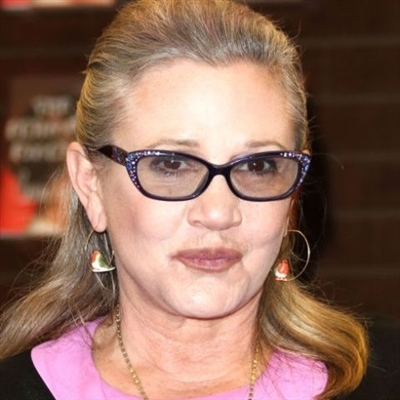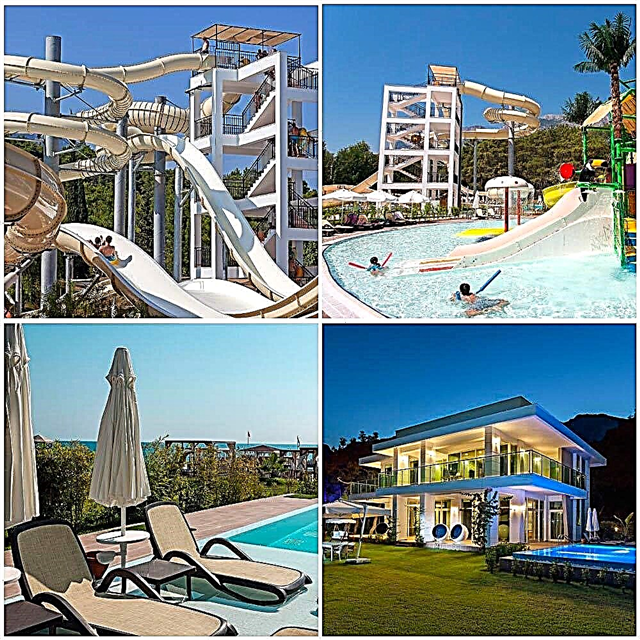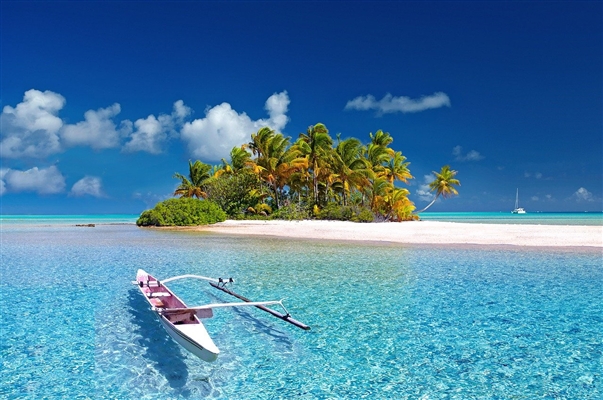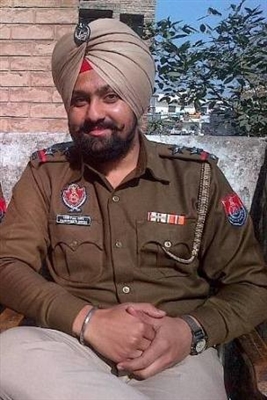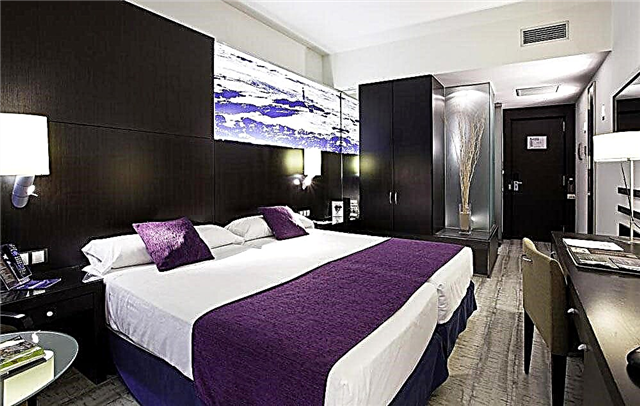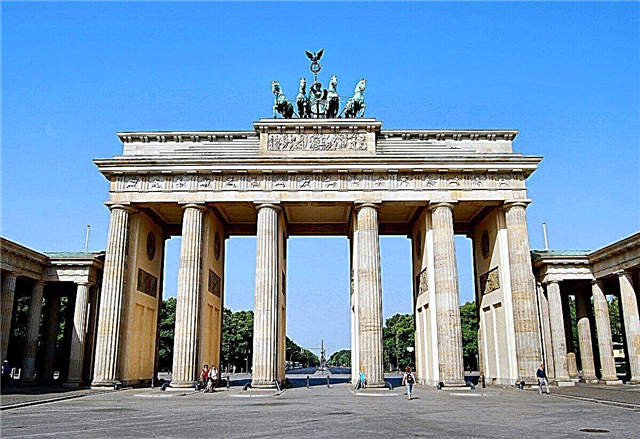In Berlin, there are many monuments and memorial complexes that are dedicated to various pages of German history. Some of them are symbols of the city - for example, the Brandenburg Gate or the national monument to the "iron chancellor" Otto von Bismarck. The events of modern history are also reflected in the memorials of Berlin - the tragedy of the Nazi regime and the Holocaust, the liberation of Berlin by Soviet troops, the division of the city and the subsequent fall of the Berlin Wall.
Many monuments in Berlin were created in honor of outstanding personalities - composers, poets, leaders of Germany and other countries. Urban sculpture of the city is a unique art object such as "Hand with a Clock", "Career Ladder" or "Ball House".
Historical and modern monuments of Berlin
List of the most famous monuments in the city.
Column of Victory
The memorial column was erected in honor of the victories of the Prussian troops in the wars of unification with Denmark, France and Austria in the second half of the 19th century. Architect - Heinrich Strack. The column stands on a red granite plinth. Initially, it was decorated with gilded captured cannons. The column is crowned with the figure of Victoria, the victorious goddess. People call her "Golden Elsa". Upstairs there is an observation deck for tourists.

Brandenburg Gate
This is the main symbol of Berlin. The gate was erected in 1791 by order of Friedrich-Wilhelm II. The Acropolis in Athens was taken as a sample. Above there is a sculptural image of a quadriga of horses, which is ruled from a chariot by the goddess of victory - Victoria. After the conquest by Napoleon, the gate was taken to Paris, but then returned. The gate was conceived as a symbol of the power of the German army - troops from the front were greeted under them, parades were held.

Memorial complex "Berlin Wall"
The monument is a reminder of the division of Berlin and Germany into Western and Eastern parts. Since 1961, the Berlin Wall area has been completely closed off, any entry and exit was controlled. Now in the former border zone there is an open exhibition dedicated to the division of Germany. Nearby are the Chapel of Reconciliation and the "Memorial Window" in memory of the human sacrifice of the division of the city. The sculpture "Jumping over the wall" is dedicated to people who, despite the obstacles and checkpoints, tried to cross to the other side, to their relatives and friends.

"Warrior-Liberator"
This monument in Treptower Park is one of three Soviet military monuments in Berlin. This is a bronze figure of a Soviet soldier standing on the rubble of a swastika and holding a little German girl in his arms. The sculptor is E. Vuchetich. The prototypes for the monument could be 2 Soviet soldiers who, during the storming of Berlin, rescued German children - Nikolai Masalov and Trifon Lukyanovich.

Soviet war memorial in Pankov
This is a memorial complex dedicated to the memory of Soviet soldiers who died during the storming of Berlin. More than 13 thousand soldiers and officers are buried on its territory. In the center of the memorial there is an obelisk 33 meters high, in front of it there is a bronze statue - Motherland. The names of the victims are engraved on the bronze plaques. The restoration of the complex was carried out in 2011-2013.

Memorial to the fallen Soviet soldiers in the Tiergarten
The monument is a series of columns arranged in a semicircle. On them are plaques with the names of Soviet soldiers who died during the storming of Berlin. The highest column is crowned with a bronze statue of the Warrior-Liberator. Nearby, on both sides of the monument, there are 2 T-34 tanks and 2 ML-20 howitzers, which were used in the battles for Berlin. To the right and left of the monument are the graves of Soviet officers.

Memorial to the victims of the Holocaust
The memorial complex is located in the center of Berlin, between the Brandenburg Gate and the remains of the bunker of the leaders of the Nazi party. It is a labyrinth of over 2,700 gray slabs separated by narrow passages. As conceived by the architect P. Eisenman, such a memorial reminds of the feeling of insecurity, anxiety and fear experienced by the victims of the Holocaust.

"World clock"
The art object is dedicated to the fall of the Berlin Wall and the unification of Germany. This is a clock that simultaneously displays the time in all time zones. Above there is an inscription: "Time will destroy all walls" and images of planets that move in orbits. The World Clock was opened on November 9, 1989. The second name of the art object is "Urania".

Statue of Saint George and the Dragon
This is one of the oldest statues that used to stand in the courtyard of Berlin Castle. It was created in 1853 by the sculptor August Kiss as a gift to Emperor Wilhelm II. At first, the idea of the statue was associated with the figure of the Archangel Michael, who strikes a serpent with a sword - a symbol of revolutionary sentiments in Germany at that time. Then the statue was converted into St. George, but the sword remained in the hands of the saint.

Bismarck National Monument
The monument to the unifier of Germany and the first Reich Chancellor Otto von Bismarck is located on the Big Star Square, previously stood in front of the Reichstag. Bismarck is depicted in a cuirassier's uniform, with a broadsword, in his hand holding a certificate of the creation of the German Empire. The height of the statue is 6 meters. On the plinth of the pedestal are the figures of the heroes of the German epic.

National Monument to the Wars of Liberation
The war of liberation in the history of Germany is a term dedicated to the struggle against the Napoleonic coalition and the threat to the independence of the German lands. As a sign of the heroism of the Prussian army in 1818-1823, an 18-meter monument in the form of a Gothic cathedral was erected. It is intended to remind not only of the victories, but also of the defeats of the army, which, despite everything, kept its fighting spirit.

Forum of Marx and Engels
This is a composition built in the 1980s. designed by Ludwig Engelhardt. In the central part there are bronze figures of Karl Marx and Friedrich Engels. Their height is 3.85 meters. Behind them are embossed walls with symbolic images of life in German society after the revolution. On the pillars - a photo from the history of German workers. The monument is located near the Berlin City Hall.

Memorial to the Roma victims of National Socialism
The monument was unveiled next to the Reichstag in October 2012, in memory of the Gypsies who died during the Nazi rule. This is a pool with dark water, which is surrounded by slabs with the names of concentration camps where the gypsy population was exterminated. Nearby is a wall with the chronology of the genocide of the Roma people by the Nazis.

Equestrian statue of Frederick the Great
This is a statue that depicts King Frederick II of Prussia in military uniform and on horseback. It is located on the boulevard Unter den Linden. The total height of the sculpture is 13.5 meters. The pedestal is decorated with scenes from the life of the king. It also contains images of Frederick II's closest associates - heroes of the Silesian Wars. The monument was opened in May 1851. He was popularly nicknamed "Old Fritz".

"Trains to Life, Trains to Death"
This is a monument to Jewish children who died during the Holocaust. It was installed at the Friedrichstrasse station - from there, trains left for England, where the Jews could escape. Two figures with suitcases are rescued children who were able to leave. The 5 people remaining on the platform are doomed to die. The monument is a copy of the same memorial erected in England near Liverpool Station.

Monument to Friedrich Schiller
This is a marble monument depicting the great German poet in full height, in a laurel wreath and surrounded by muses. The opening of the monument took place in 1871 on the Gendarmenmarkt - one of the central squares of the city. A bronze copy of the sculpture is located in the southern part of the Schiller Park in Berlin.

Monument to Beethoven-Haydn-Mozart
Ludwig van Beethoven, Joseph Haydn and Wolfgang Amadeus Mozart are the three greatest composers.The monument, designed to perpetuate their memory, was created in 1904 and is a white obelisk, on the edges of which figures of composers are depicted. The obelisk is crowned with a laurel wreath - a symbol of glory. The monument is located in the Tiergarten.

Monument to Polish Soldiers and German Anti-Fascists
This is one of the memorials dedicated to the Resistance movement during the Second World War. It is a composition of two columns connected by a flag into a single whole - a symbol of common efforts in the victory over fascism. The granite high relief depicts a soldier in Polish uniform and a German underground worker. Nearby on the wall is carved Tadeusz Kosciuszko's slogan "For your and our freedom" in Polish and German.

Monument to Prince Albrecht of Prussia
This is a bronze statue of the hero of the Franco-Prussian wars, brother of the King of Prussia and the Emperor of Germany. Prince Albrecht is depicted at full height, in an unbuttoned general's overcoat, with a cavalry whip in his hands. The monument was erected in 1901 on the Schlostrasse boulevard, not far from the former military barracks.

Monument to Lessing
The sculptural image of the great German poet Gotthold Lessing was installed on Lennenstrasse in 1890. The white marble statue depicts the poet at full height. On the pedestal, in addition to a plaque with the poet's name, there are images of his closest associates - the philosopher M. Mendelssohn, the poet E. von Kleist and the publisher FK Nikolai. The monument is also decorated with symbolic images - the genius of humanity and an allegorical image of criticism.

"Monument to the burned books"
This is a memorial reminiscent of the tragic event in the history of Germany - the destruction of more than 20 thousand books by the Nazis on May 10, 1933, which were included in the list of prohibited. The monument is a square glass plate, looking into which you can see a room with empty book shelves. The author is the Israeli artist M. Ulman.

"Molecular man"
The art object by the American sculptor J. Borofsky is a composition of three male silhouettes pierced with round holes - symbolic molecules. The figures are made of aluminum. As conceived by the sculptor, the idea of an art object is a search for unity and integrity in the world. The opening took place in 1999 on the Spree River on the border of three German districts.

"No violence!"
The sculpture is located in the courtyard of the Federal Chancellor's Office and is a bronze 45 caliber pistol with a barrel tied in a knot. The author is the Swedish sculptor Karl Reuterswerd, who began to create similar monuments after the death of John Lennon. The same sculptures are in 16 cities around the world.

"Berlin"
The work is dedicated to the unification of Berlin after the division into East and West. It is a sculpture of complex shape, 5 meters high and weighing 87 tons. The author is the Spanish sculptor Eduardo Chillida. The choice of iron as a material is not accidental - the strength of the material should symbolize the strength of the reunification of the city into one whole. The monument is also located near the Office of the Federal Chancellor. Another sculpture with the same name and dedicated to the unification of the country is located near Kurfürstendamm. This is a composition of intertwined steel pipes. Authors - Brigitte and Martin Machinski.

"Fathers of Unity"
The sculptural composition consists of three bronze busts - German Chancellor Helmut Kohl, former US President George W. Bush and the head of the USSR, Mikhail Gorbachev. These are the people who contributed to the unification of Germany. The monument was opened in 2010 near the site where the Berlin Wall used to be. The inscription on it reads: "Unity in freedom - this is our task"

Memorial to homosexuals - victims of Nazism
This is a memorial opened in 2008 in the Great Tiergarten park in memory of homosexuals who were persecuted by the Nazi party. The monument is a 3.6 meters high concrete cube with a window. Looking into it, you can see a short film with two men kissing. Periodically, the shots are replaced by kisses of two women. The authors of the monument are Scandinavian artists M. Elmgrin and I. Dargset.

"Captain from Köpenick"
The bronze statue was installed in 1996 at the entrance to the town hall of one of the eastern districts of Berlin - Köpenick. It depicts a famous adventurer who, in 1906, deceived the treasury of Köpenick, then a separate city. After his arrest, he was pardoned by order of Kaiser Wilhelm, who appreciated the boldness of the adventure.

"Career ladder"
This is a 16-meter composition installed at the building of the Investment Bank in 2007. It is a staircase, along which three men fiercely climb up, trying to throw off an opponent. The author is sculptor Peter Lenk. The same 14-meter-high art object was installed in 1994 in Constanta.

"Hand with a watch"
The art object is located in the lobby of the Tiergarten gymnasium. It was created in 1975 as part of a project to transform the urban environment. This is a man's hand with a working electronic clock. The author is Joachim Schmettau, who also owns other urban sculptures. The Hand with the Clock has become a favorite meeting place among the residents of the city. The monument can be seen in Depeche Mode's video "Everything Counts"

"House-ball"
This is a sculpture installed in 1997 on Bethlehem Square in front of the former checkpoint to the territory of another part of Berlin. It is a round bundle of things and household items 11 meters high. On the one hand, it is a symbol of ease of movement in the modern world, on the other, the memory of repatriates and refugees from different periods of German history. Authors - K. Oldenburg and K. van Bruggen.


